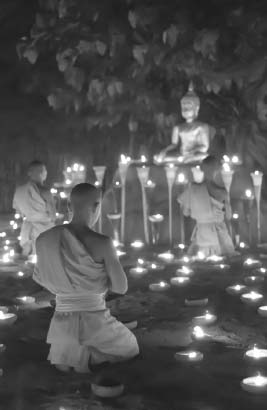BuddhismLeadership, Authority, and Religious Roles |
Are there religious hierarchical structures in any branch of Buddhism? |
Early Buddhist teaching replaced the caste system’s dramatic social and religious stratification with an egalitarian ideal. “Be a lamp unto your own feet,” the Buddha counseled his followers. His rejection of a mediating priesthood made the Buddha a sort of “protestant reformer.” He wanted the life of the Sangha to represent a perfectly level playing field. In practice, the elevation of the monastic life over that of the laity introduced a kind of stratification into Buddhist life. Within the early monastic community seniority alone distinguished one member from another. As the Sangha expanded and the itinerant mendicants began to settle into fixed residences, monastic life became more complex and required a division of labor. Though many decisions were taken by a monastic council, a de facto hierarchy developed. At the top was the abbot, assisted by spiritual guides and preceptors chosen from among the senior monks. The majority of the community was made up of senior monks and nuns and novices. In addition, many of the denominations eventually took on a semblance of hierarchical organization.
But there is a major difference between the function of such organizational structures in Buddhist institutions and parallels in traditions like Roman Catholicism and Shi’a Islam. Buddhist hierarchies seem to evolve as a result of internal structural needs rather than as a result of doctrine. Traditions that teach the need for mediators between ordinary people and the ultimate sources of truth and spiritual power develop hierarchical structures for theoretical as well as practical reasons.

Monks pray in a Buddhist monastery in Chiangmai, Thailand.
